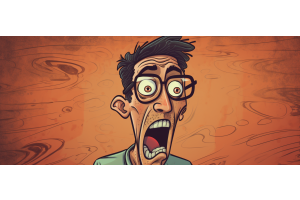Squash & Stretch

The Art of Squash and Stretch in Cartoon Animation: Breathing Life into Characters
Cartoon animation is a magical process where animators bring inanimate drawings to life. One of the fundamental principles that animators rely on to create dynamic and engaging characters is "squash and stretch." This ingenious technique gives characters their unique charm, personality, and fluidity, making them more memorable to the audience. Here at Chromacolour, we have explored how squash and stretch is utilised in cartoon animation and its profound impact on the art form.
Squash and stretch is an animation principle that involves distorting a character's shape to add a sense of weight, flexibility, and emotion to their movements. When an object or character is squashed, it is compressed or flattened, and when stretched, it elongates or extends. These actions create a dynamic visual effect that mimics the laws of physics, enhancing the illusion of life in animation.
Squash and stretch is a great way for animators to communicate emotions effectively. When a character experiences joy, excitement, fear, or surprise, the exaggeration of their features through squash and stretch amplifies the emotional impact. For example, when a cartoon character laughs heartily, their face might elongate and stretch, and when they are scared, their entire body could squish down, conveying vulnerability.
Squash and stretch should be used as a way of conveying weight and impact. In cartoon animation, objects and characters react to forces such as gravity or collisions. By applying squash and stretch techniques, animators can emphasize the sense of weight and impact during movements. When a character jumps off a high ledge, they will stretch on the way down to emphasize the falling motion, and upon landing, they will squash to emphasize the force of impact.
The very best animators are able to create fluid and lively movements. Squash and stretch is the key to this as it makes characters feel more organic and natural. Without these exaggerated deformations, characters might appear stiff and robotic. By carefully implementing squash and stretch, animators achieve a more captivating and enjoyable visual experience for the audience.
The proper use of squash and stretch can enhance the timing and rhythm of animation. For instance, a character might stretch briefly before rapidly squashing into a new pose, creating a dynamic movement flow. This principle ensures that animation feels well-paced and engaging, preventing it from becoming monotonous.
Squash and stretch is often associated with a more cartoony or exaggerated animation style. This style allows artists to bend reality and explore artistic liberties, making the animation visually intriguing and entertaining.
While squash and stretch are powerful tools in the hands of skilled animators, they can also present challenges. Maintaining consistency in character design throughout the deformations is crucial to avoid visual confusion. Additionally, overusing squash and stretch can lead to overly comical or unnatural animations, diminishing the believability of the characters.
There is no doubt that squash and stretch is an essential principle in animation, providing animators with a powerful means of breathing life into characters and creating captivating visual storytelling. By skilfully manipulating the shapes and proportions of characters and objects, animators can evoke emotions, convey weight, and produce fluid, engaging movements. The art of squash and stretch allows for a delightful and mesmerizing animated experience, ensuring that this time-honoured animation principle remains a cornerstone of the cartoon industry for years to come.





